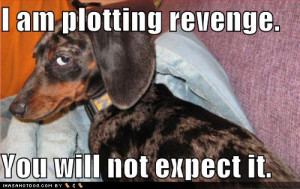 If you’re an entrepreneur—or any expert for that matter—who wants to be a more powerful speaker and someone the media wants to interview—tell short, punchy, captivating stories.
If you’re an entrepreneur—or any expert for that matter—who wants to be a more powerful speaker and someone the media wants to interview—tell short, punchy, captivating stories.
You cannot speak in 30,000 foot generalities and hope to get media attention or keep any listener’s attention.
When you talk, the listener needs to be able to play a movie in their head of what you are saying. Better still, you want to create a virtual reality experience.
So how do you get good at telling stories? One obvious place to start is paying attention to people YOU find mesmerizing, people who grab and hold your attention.
Notice how they do it. What do they do that captivates you?
Chances are, a big part of how they do it is by telling stories that make you feel like you’re there, going through the experience they are recounting.
Want a great resource for listening to great storytelling in action?
Check out the daily podcast EntrepreneurOnFire.com by John Lee Dumas. Each day he interviews an entrepreneur and asks them to share stories that illustrate key teaching points, such as an AH-HA moment, their proudest moment, and a failure that proved to be a great learning experience.
It’s no accident that EntrepreneurOnFire.com provides listeners with a rich tutorial on how to be a captivating storyteller. John Lee Dumas explains to his guests in their pre-interview conversation: “They want to hear your journey, not generalities, not vague, aerial perceptions of what you think failure means. They want to resonate with you as a person. I want you to tell a story…to really tell of a specific time in your life. We want to feel like we are there with you…we are all about the story
Here’s an example from a great interview John did with Mike Michalowicz, the entrepreneur behind three million-dollar businesses, and the author of The Pumpkin Plan and The Toilet Paper Entrepreneur.
John asked Mike to share an AH-HA moment.
Here’s Mike’s answer (I edited it a bit to make it read smoothly. If you’ve ever read transcripts of great speeches or interviews, the spoken word and written word flow very differently)
The AH-HA moment for me actually came in another dark day, which I was referring to, but has become the most important moment of my life and I think it always will be…
It was the day I had lost all the money I made.
After I sold that second company, I told you I became an angel investor, but I also became arrogant. I believed that my worth was represented by what I had, not in what I was contributing.
So I bought three cars. I bought the Viper, the BMW, the Land Rover… literally all on the same day.
I moved into the biggest house in town; I had all this stuff.
I promised myself I would never be that guy, but I became that guy.
I was a dick, a total dick. I wasn’t rude to people, but I thought I was better than people, which is the rudest thing of all.
After about three years of living this arrogance, I lost everything.
I was investing and losing. I was buying and losing. I was living off savings.
I wasn’t making money. I was trying to figure out what I’m going to do next.
I came home one day, had another fateful call with my accountant. He said, “Mike, your taxes are due now and you owe $50,000 in taxes.”. I literally had $30,000 left in my bank account.
I was like, “I can’t pay my taxes.” He’s like, “Oh, you may have to declare bankruptcy.” I was like, “I’ll never declare bankruptcy, but holy crap.”
I came home and I was sobbing, in front of my family and just saying, “I’ve lost it all.”
Everyone was blankly staring at me because they’d never…I mean…this is your father or your husband, who has done everything to protect the family.
Now he’s lost it all.
My daughter ran away…
She was eight or nine years old at the time.
She comes back about a minute later with her piggybank, and she puts it on the table and she goes, “Daddy, we’re going to make it.”
What I learned in that moment – and I’m choking up now as I remember it – what I learned in that moment is that we are not our number.
We are not our stuff.
We are our authentic self.
That was what taught me about authenticity. My daughter just put out the most of her that she could in the moment, and it changed the moment.
I realized if I put the most of me in the situation, if I put my authentic self out there, that’s where I can change moments and help change people.
So that was my biggest learning moment. It was in my darkest period where my eight-year-old daughter taught me the lesson, the ultimate lesson…
(BTW, at the end of the post, I’ll give you the link to the actual interview, so you can hear him tell the story)
As you read Mike’s story, couldn’t you just picture it? Didn’t the story just grab you and refuse to let go?
That’s what stories well told do and that’s why you want to get good at telling stories.
Think about how different it would be if John asked Mike to share an AH-HA moment and Mike said something like “After building and selling a multimillion dollar business, I felt I had arrived. I felt like I had it all figured out….and then I lost it all. That was a really hard thing to go through…but fortunately…I picked myself back up and now I once again have a successful business.”
How inspiring would you find that?
What about if you are an entrepreneur going through tough times, not generating any income, racking up credit card debt and thinking “Will this every change?”
Wouldn’t you find Mike’s story just the dose of inspiration and perspective you needed to realize “This tough time is just a chapter in my life’s story…it’s NOT the whole story.”
That’s the difference between speaking in generalities and platitudes and telling a riveting story.
So…I highly recommend you listen to EntrepreneurOnFire both for the inspiring and instructional content from the entrepreneurial perspective, but also from the “How to Tell Great Stories” perspective.
NOTE: The story I shared above starts at 13 minutes in the Mike Michalowicz interview. However, I recommend listening to the whole interview. It’s one of EntrepreneurOnFires’s best.
 About John Lee Dumas: EntrepreneurOnFire is a top ranked, 7-day a week business podcast, hosted by John Lee Dumas, interviewing today’s most successful and inspiring Entrepreneurs. We share the journey of our spotlighted guest, highlighting a failure and lessons learned, an AH-HA moment and the steps taken to turn that moment into success, and the LIGHTNING ROUND where John asks five questions that extract nuggets of wisdom from his guests.
About John Lee Dumas: EntrepreneurOnFire is a top ranked, 7-day a week business podcast, hosted by John Lee Dumas, interviewing today’s most successful and inspiring Entrepreneurs. We share the journey of our spotlighted guest, highlighting a failure and lessons learned, an AH-HA moment and the steps taken to turn that moment into success, and the LIGHTNING ROUND where John asks five questions that extract nuggets of wisdom from his guests.
Since EntrepreneurOnFire’s launch in September of 2012, we’ve had the pleasure of featuring Seth Godin, Gary Vaynerchuk, Barbara Corcoran, Tim Ferriss, Chris Brogan and over 500 inspiring Entrepreneurs.
EntrepreneurOnFire is all about inspiring YOU to take YOUR entrepreneurial leap. We know that by hearing the failures, AH-HA moments, and successes of others, you can begin to craft your dream and take inspired ACTION!
 About Mike Michalowicz: Mike is the entrepreneur behind three multi-million dollar companies and the Author of The Pumpkin Plan and the business cult classic, The Toilet Paper Entrepreneur. With a popular, quirky website at MikeMichalowicz.com, he is a globally recognized entrepreneurial advocate. He is a former small business columnist for the Wall Street Journal and now hosts the business make-over segment on MSNBC’s Your Business.
About Mike Michalowicz: Mike is the entrepreneur behind three multi-million dollar companies and the Author of The Pumpkin Plan and the business cult classic, The Toilet Paper Entrepreneur. With a popular, quirky website at MikeMichalowicz.com, he is a globally recognized entrepreneurial advocate. He is a former small business columnist for the Wall Street Journal and now hosts the business make-over segment on MSNBC’s Your Business.
 I just saw a great example of a mistake a lot of us make when explaining our Big Idea or a key concept.
I just saw a great example of a mistake a lot of us make when explaining our Big Idea or a key concept.






